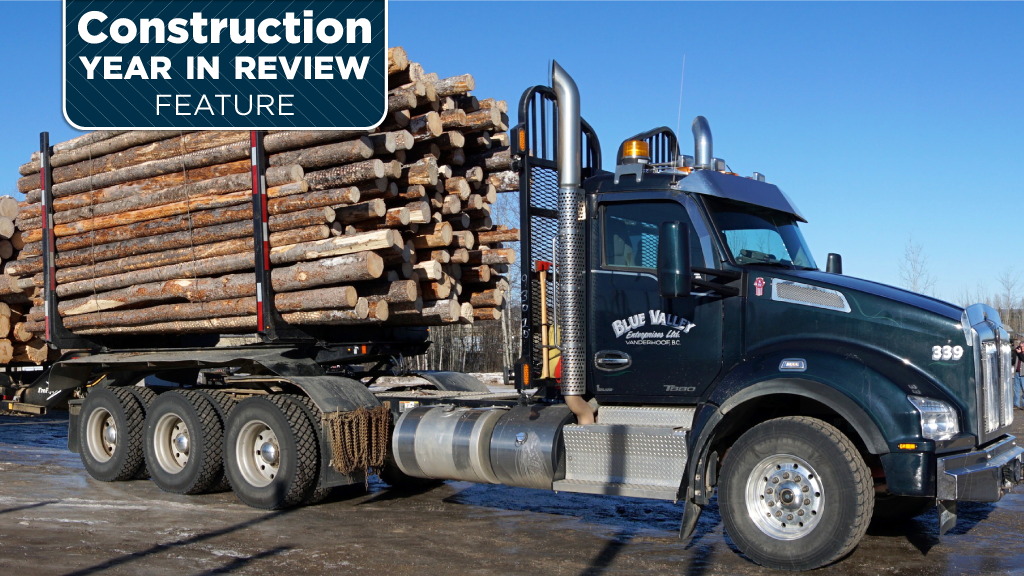With 2021 coming to a close, Western Canada’s construction leaders reflected on what the most significant stories of the year were and what they could mean for the future.
B.C. weathers challenges
Chris Atchison, president of the British Columbia Construction Association (BCCA), said while the designation of construction as an essential service and the momentous shift in the sector’s culture towards talking about mental health and rejecting harassment were significant, the biggest story of the year was prompt payment.
“Our contractors must be paid in a timely way for work they’ve done,” said Atchison. “B.C. has waited far too long for our government to support the construction industry on this. Based on our recent town hall meetings with the attorney general’s legal counsel, we expect to see legislation tabled in the fall of 2022. BCCA and our industry partners won’t be turning down the heat on this issue.”
Brynn Bourke, executive director of the BC Building Trades, said the key theme of 2021 was the incredible dynamism of the construction industry.
“When I look back and think about this past year, we were constantly thinking about how to keep people worker in terms of COVID, in terms of working safe, in terms of vaccine rollouts, in terms of vaccine mandates and then fold in ever-changing public health orders,” said Bourke. “Halfway through the year, construction workers were prioritized for vaccines and we had to roll out a system on the fly for that.”
Bourke also noted the province’s deadly heat wave had to be navigated safely and then B.C. was hit with historic flooding and landslides.
“We had to figure out what that meant for transportation networks, stranded workers. Now we are turning our minds to rebuilding and overbuilding some of that infrastructure to shock-proof it for the future. It really is the theme: how dynamic and resilient and nimble this entire industry has had to be.”
Dave Baspaly, Council of Construction Associations president, echoed Bourke’s statements, saying he was also struck by the resiliency and adaptability of the construction sector. Through fires, floods, heat waves and the COVID-19 pandemic, builders kept building and contributing to the economy.
“Behind all of this has been a good news story,” said Baspaly. “Construction stepped up to meet the needs of the province and in turn has had a banner year of being needed at all points in the system.”
Baspaly added while many other parts of the economy shut down, builders kept going, which had a trickle-down economic effect.
“We are proud of the work construction did in helping buoy the economy and support our recovery,” he said. “It has been an unprecedented year of disasters, COVID variants, even a tornado, but through it all there was a good news story and construction stepped up in all those circumstances.”
Alberta battles supply chains
Ken Gibson, executive director of the Alberta Construction Association, said the biggest issue his members faced in 2021 was the ups and downs of material costs.
“The most significant issue for 2021 and likely 2022 is the large material cost increases and material shortages caused by COVID and weather-related supply chain disruptions,” said Gibson. “These have impacted contractors’ financial viability and ability to bid work, recruit and train workers, and invest in their firms.”
Gibson added these issues also impacted project schedules, project costs, and caused delays and cancellations of critical projects.
“These issues highlight the shortcomings of traditional forms of project delivery and transactional contract language that unfairly places unmanageable risks on contractors,” added Gibson.
Bill Black, president of the Calgary Construction Association, also cited material cost escalation and supply chain issues as a major theme.
“It just became another hazard to work around,” said Black.
He explained July saw lumber prices shoot up and that cost uncertainty has continued. There have also been long wait times for steel products. Black said the issue has been worsened by some owners ignoring the realities of fluctuating material prices and pushing all that risk onto contractors.
The association is looking to compile material price information for contractors to better equip them for conversations with owners.
“It could give them somewhere to point when owners refuse to accept that there is an issue,” he said.
Follow the author on Twitter @RussellReports.











Recent Comments